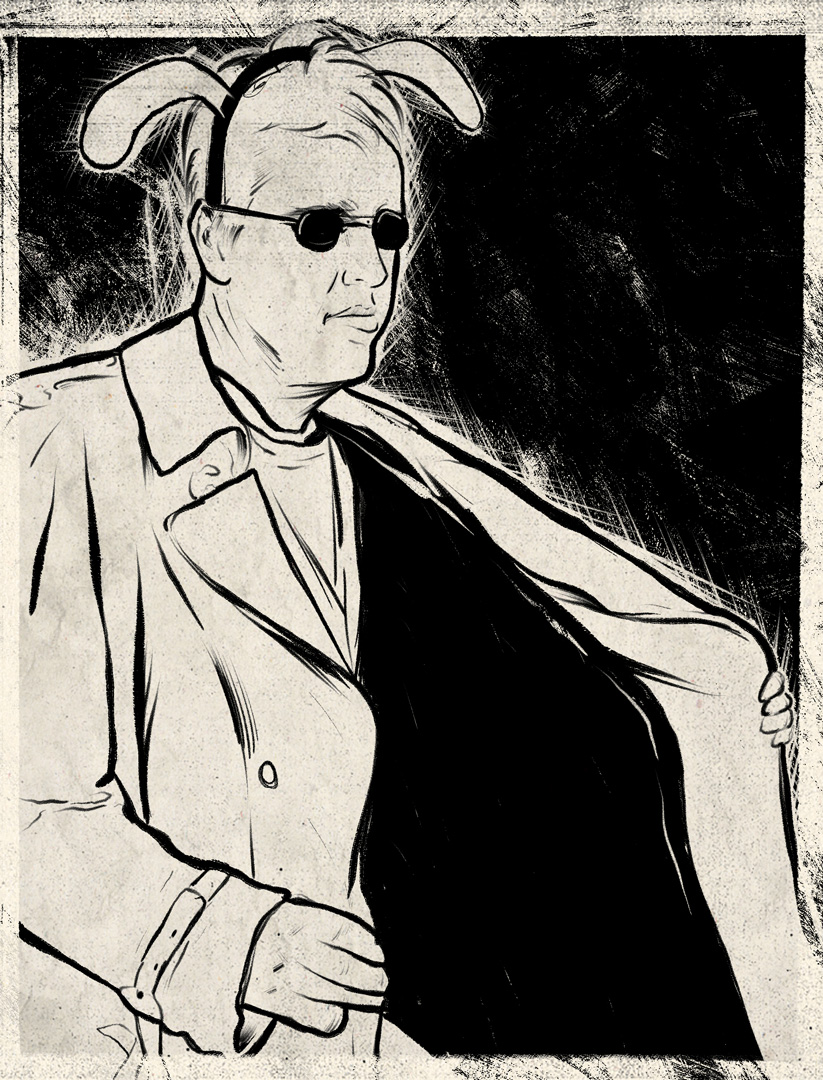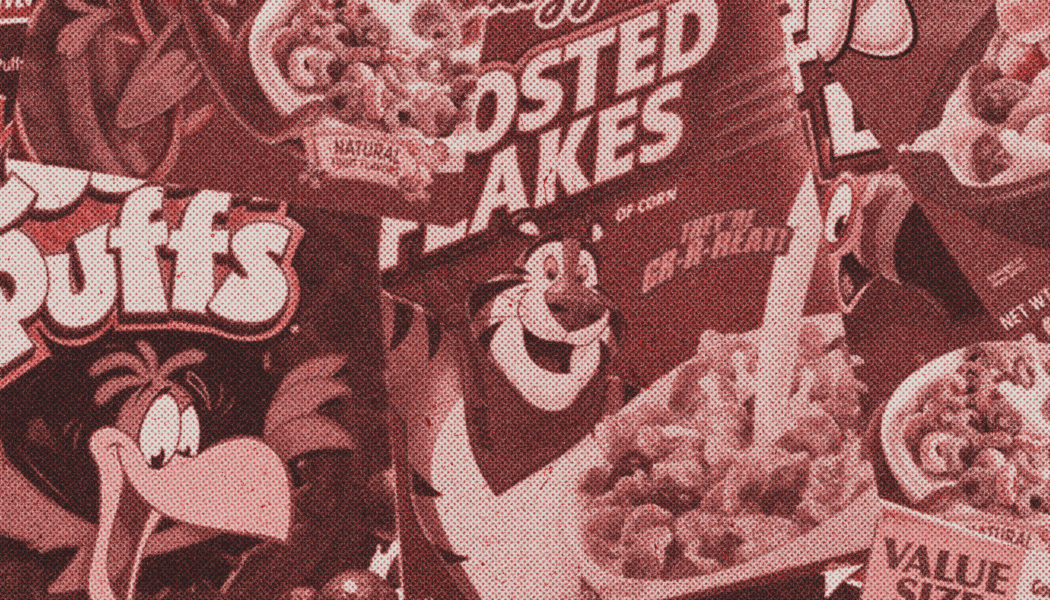How Big Milk Took Over Breakfast.
Words by John Capone and Illustrations by Zack Causey
“We should have known it was over when they got to Seinfeld,” a source, speaking on condition of anonymity out of fear for their own safety, told Whalebone. Of course. It had always fit that of the few posed eccentricities and quirks attributed to the lead character of the eponymous hit ’90s sitcom in lieu of a personality— among them, a childish fixation on Superman, a hanging bicycle, steadfast devotion to attire we’d come to call normcore (except for that one puffy shirt)—an almost fanatical devotion to sugary breakfast cereals stood front and center. But it came later, as the show climbed in popularity and when Larry David’s wise counsel might no longer be heeded. The shelf full of boxes in the kitchen served as a defining characteristic of the flimsy set. And Jerry’s spit takes when Kramer bursts through the door with some outlandish plan that often contained more milk than chewed-up fortified sugar-coated flakes. Big cereal had clearly made a deal with Jerry. He likely didn’t think much of it and figured that an affected taste for nostalgic cartoon-festooned cardboard boxes saved him the hard work of building an actual character. But he’s little more than a patsy. He probably didn’t know that behind the scenes, pulling the strings all along—it was Big Milk. Always has been.

Fat Tony was the worst of them. He led this “Milk Mafia,” according to our source who has spent years in a Brooklyn apartment connecting the dots. The leaders of these dairy conglomerates have hidden in plain sight for decades, toying with us by fashioning the cereal mascots after themselves. The 1950s were one thing. Every good boy who wanted to be like the Beaver might down a cool glass of milk if Mom gave it to him. And Tony the Tiger, Kellogg’s homage to Fat Tony himself, made his debut. But by the 1970s it took a lot more to entice kids to enjoy what was essentially a bowl of warm puss shot from bovine mammary glands. Enter the likes of the Trix Rabbit (a not-far-off caricature of Tricky Teddy), Toucan Sam (ditto for Sammy the Nose) and Sonny the Cuckoo Bird (the actual Sonny was cuckoo for a lot more than Cocoa Puffs).

Working with the corn lobby and the wheat and oat growers (who eventually went rogue, but that’s a story for another time), Tony, Teddy, Sammy and Sonny engineered the perfect milk-delivery vehicle in puffed oat and corn, slathered in high-fructose corn syrup and put in brightly colored boxes with the Big Milk Board doppelgängers on the fronts for good measure (and games and puzzles on the backs). Commercials and magazine ads showing kids gulping down the Day-Glo puffs—with bowls filled to the top with milk of course—created the demand—and the presence of a 4-ounce glass of orange juice in these ads alongside bowls of candy floating in milk somehow convinced parents this was a healthy choice for their children’s breakfasts.

Snap, Crackle, Lies!
By the time the Big Milk Mafia convinced the networks— rumor has it Fat Tony dangled Barry Diller over the edge of a hotel balcony in Los Angeles to get the deal done—to create Saturday morning cartoon blocks, the gustatory fate of a generation was sealed. These idle hours served both as the perfect time for consumption and the ideal vehicle for marketing a “balanced” breakfast. Sitting on the couch in the basement, watching Scooby-Doo or Jabberjaw while gorging on bowls of corn syrup and lactose, kids became Big Milk’s best customers.

But eventually, they outgrew this ritual. There were always new kids to hook on cow juice, of course, but it wasn’t enough for Big Milk. They wanted to be bigger. And that’s when Jerry Seinfeld unwittingly made his deal with the devil. Fat Tony thank you for nothing.

